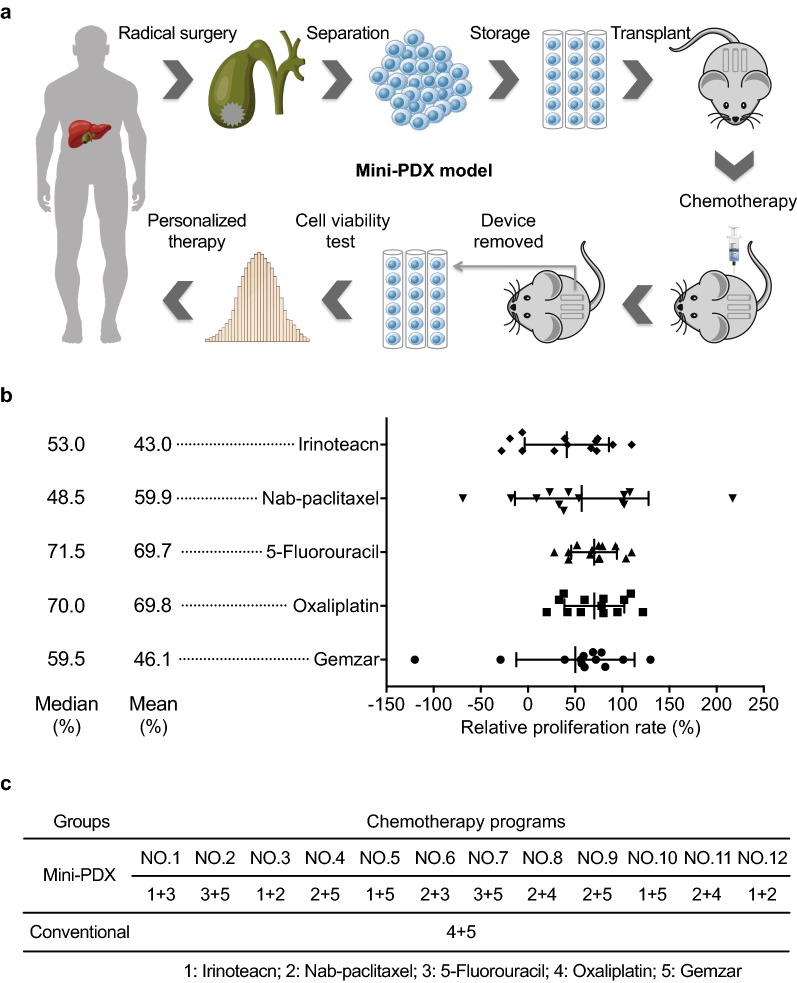Fig. 1.
An overview of the generation of the mini-PDX model. a Gallbladder carcinoma cells from gallbladder carcinoma patients under surgical resection were transferred to the HBSS washed capsules and then subcutaneously implanted in BALB/c nude mice. Drugs or placebo (saline) were injected via the tail veins or intraperitoneally. Finally, the capsules were taken out and the anti-tumor activity was evaluated by detecting cell viabilities via CTG assays. Based on the anti-tumor activity data of the mini-PDX models, the optimal chemotherapy regimens were selected for different gallbladder carcinoma patients. b Scatter plot shows the results of the relative proliferation rate of the five drugs tested on the mini-PDX model among the 12 gallbladder carcinoma patients. c Detailed results reveal the two most effective agents chosen for treating the patients in the mini-PDX group and the conventional chemotherapy group

